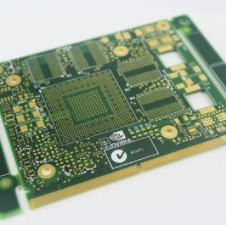1. PCB design technology will have an impact on the following three effects:
1. The influence of electrostatic field before electrostatic discharge.
2. Charge injection effect caused by discharge.
3. Field effect produced by electrostatic discharge current. However, it mainly affects the third effect.
The following discussion will provide design guidelines for the issues described in Article Iii.
Generally, the field coupling from the receiving circuit can be reduced in one of the following ways:
1. Use the filter at the signal source to attenuate the signal.
2. Use the filter at the receiving end to attenuate the signal.
3. Increase the distance to reduce coupling.
4. Reduce the antenna effect of the source and/or receiving circuit to reduce coupling.
5. Place the receiving antenna and the transmitting antenna vertically to reduce coupling.

6. Shield between the receiving antenna and the transmitting antenna.
7. Reduce the impedance of the transmitting and receiving antennas to reduce electric field coupling.
8. Increase the impedance of one of the transmitting or receiving antennas to reduce magnetic field coupling.
9. Use a consistent low-impedance reference plane (provided by the multi-layer PCB design) to couple the signals to keep them in common mode. In a specific PCB design, for example, electric or magnetic fields dominate, application methods 7 and 8 can be solved. However, electrostatic discharge usually generates electric and magnetic fields, which indicates that Method 7 will improve the immunity of the electric field, but at the same time will reduce the immunity of the magnetic field. Method 8 and Method 7 have the opposite effect. Therefore, methods 7 and 8 are not perfect solutions. Whether it is an electric field or a magnetic field, the use of 1~6 and 9 will achieve a certain effect, but the PCB design solution mainly depends on the comprehensive application of methods 3~6 and 9.
2. Planar microstrip line resonant structure of PCB
The conduction band of the PCB microstrip line can be made into rectangular, disc, ring and other shapes to form a microstrip resonator, which is widely used in MICs to construct directional couplers, filters, oscillators and mixers.
1. Rectangular microstrip line resonator A rectangular microstrip line resonator, the length of the rectangle is l, the width is 2w, the thickness of the substrate is h, and the dielectric constant is εr. It can be approximately regarded as an open path with a length of l. When resonating, the length of the resonant line should be an integer multiple of λg/2. However, the open end of the microstrip line has terminal capacitance instead of a true open circuit. This additional capacitance can be simulated by an elongation Δl, so the resonant frequency of the rectangular microstrip line in a quasi-static state is approximated by the formula, εre is The effective dielectric constant of the microstrip line.
2. Disc-shaped microstrip line resonator Disc-shaped microstrip line resonator. For a microstrip disk with a substrate thickness h<<λ, a cylindrical cavity surrounded by magnetic walls can be used to simulate.
3. Circular ring-shaped microstrip line resonator The circular ring-shaped microstrip line resonator is also a very widely used resonator in MIC. It can be used to measure the dispersion characteristics of the microstrip line and its shape. The inner and outer radii of the ring are a and b, respectively. The resonance condition of the resonator can be obtained from the electromagnetic field excited by the ring cavity surrounded by magnetic walls.
4. Triangular microstrip line resonator Equilateral triangular microstrip line resonator is also a widely used microstrip line resonator. This kind of resonator has a higher radiation Qr factor than the disc shape, which is an obvious advantage in the design of low loss MICs.